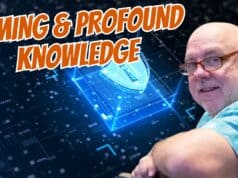Episode #115 is a discussion with Eric Ries (@ericries), entrepreneur and author of the book The Lean Startup: How Today's Entrepreneurs Use Continuous Innovation to Create Radically Successful Businesses.
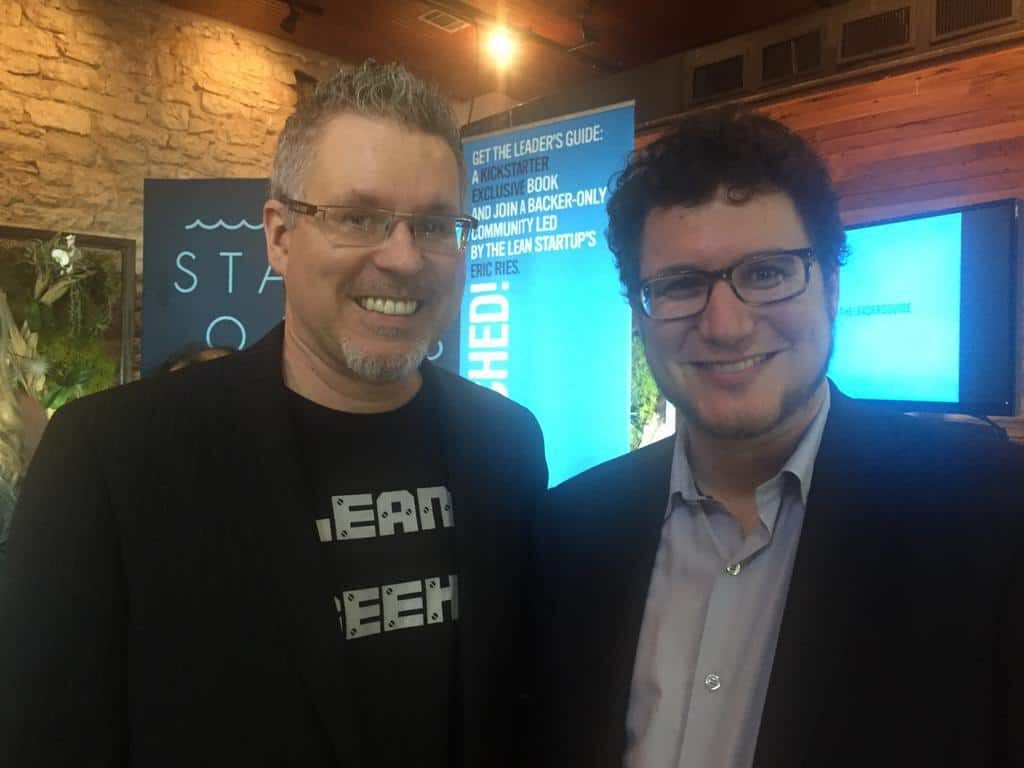
Today, we talk about how got introduced to Lean, core materials like books by Womack and Jones and Jeff Liker, and how he has put a lot of thought into how to take proven Lean principles – such as reduced batch sizes, 5 whys analysis, and faster time to market – and applied them to startups.
We both agree there are a lot of applications of these Lean Startup principles even if you are working on new products in larger, older, manufacturing settings – so I hope you'll take 20 minutes to listen regardless of your background, as Eric's work has pushed my attempts at Lean thinking in new directions.
You might also be interested in Podcast #99 with Brant Cooper and Patrick Vlaskovits on “Customer Development.“
To point others to this episode, use the simple URL: www.leanblog.org/115.
Book website: http://www.lean.st/
Buy the Book via Amazon: The Lean Startup: How Today's Entrepreneurs Use Continuous Innovation to Create Radically Successful Businesses
Blog: http://www.startuplessonslearned.com/
For earlier episodes, visit the main Podcast page, which includes information on how to subscribe via RSS or via Apple Podcasts.
If you have feedback on the podcast, or any questions for me or my guests, you can email me at leanpodcast@gmail.com or you can call and leave a voicemail by calling the “Lean Line” at (817) 993-0630 or contact me via Skype id “mgraban.” Please give your location and your first name. Any comments (email or voicemail) might be used in follow ups to the podcast.
Listen to the podcast here
Eric Ries On The Lean Startup Methodology And How To Build Successful Businesses With Continuous Innovation
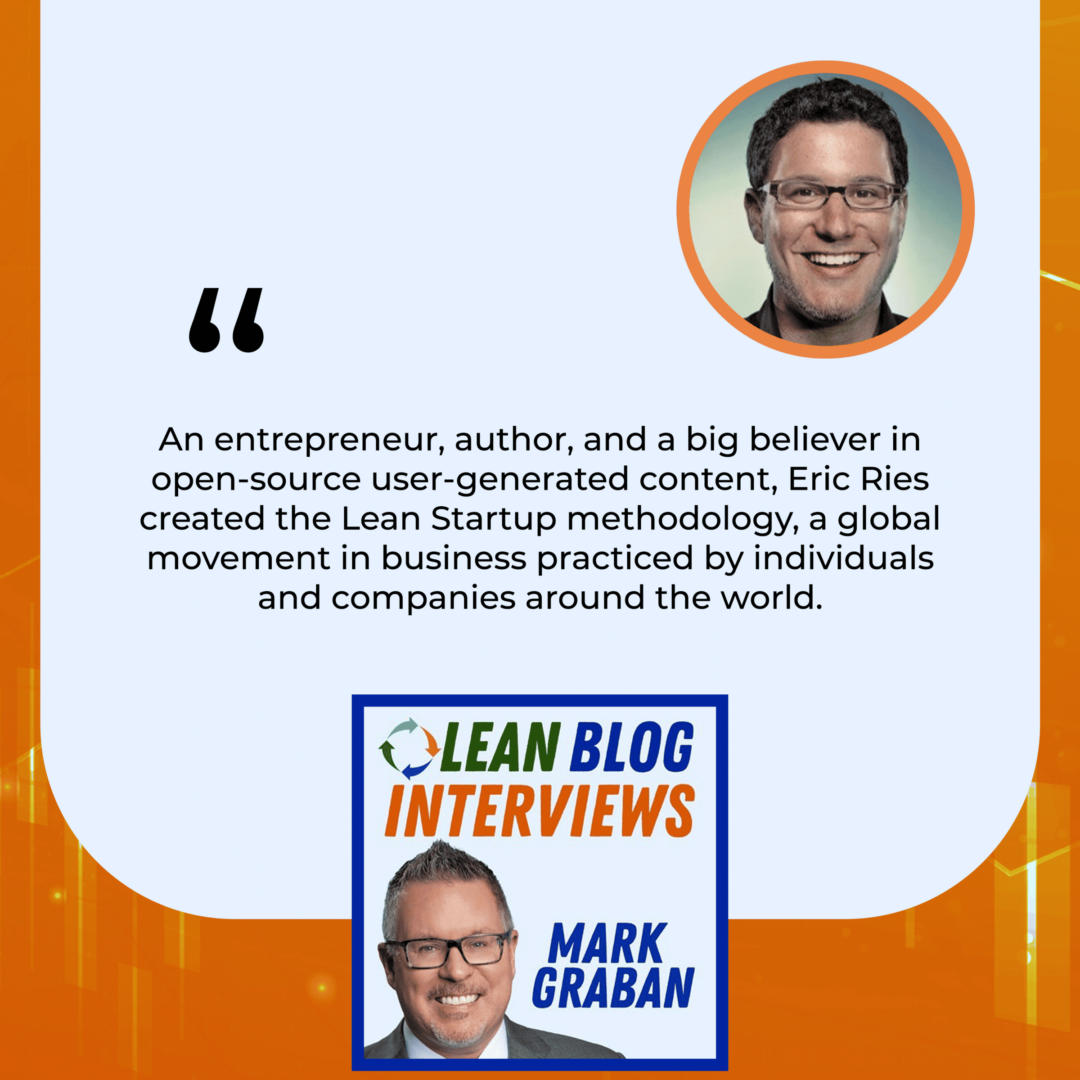
This is episode 115 of my show for March 10th, 2011. My guest is Eric Ries, entrepreneur and author of the upcoming book, The Lean Startup. We'll talk about how Eric got introduced to Lean, to core materials such as books by Womack and Jones, and Jeff Liker. How he has put a lot of thought into how to take proven lean principles such as reduced batch sizes, five whys analysis, faster time to market, and customer focus, and applied them to startups.
We both agree that there are a lot of applications of these Lean Startup Principles even if you, the audience, are working on new products in larger older manufacturing settings. I hope you'll take twenty minutes to tune in regardless of your background as Eric's work has certainly stretched my attempts at lean thinking in new and better directions. As always, thanks for tuning in.
—
Eric, it's nice of you to take time out of your busy schedule to talk on the show. Thanks for being here.
Thank you very much for having me.
I was wondering if you can introduce yourself briefly to the audience. Also, talk a little bit about how, as a software developer, you got exposed to Lean or ideas that you eventually discovered seemed very much like Lean.
My background is as a computer programmer. I'm one of those kids that grew up programming computers and I was surprised pleasantly so when I found out you could get paid to do that as a career. I thought of it as something you do for fun in the basement. I always had the experience as a programmer, maybe it's just my bad luck, working on projects that either never saw the light of day or that failed in the marketplace. I have worked with a lot of different cool pieces of technology that have no customers.
As a programmer, I naturally was always looking for technical solutions to that problem. I was a big believer in open-source user-generated content. I always assumed that if I used the right programming methodology, the right platforms, APIs, and the right open-source technology, those things would all solve that problem, and they didn't.
It was pretty frustrating because as I started to do more things that were more entrepreneurial, I would always see these stories in magazines and see the movies. There are some great movies out where the crazy cool programmer works on something cool, and then they're on the cover of magazines and they make a lot of money. I kept doing all the same things that the person in the movie does, and then not having that outcome. I'm a little bit frustrated about that.
I started to move away from purely technical solutions and I started to think about how we could increase the odds that the stuff that we're building matters to customers. I didn't get exposed to lean thinking directly until relatively late in my career. I had been exposed to something called agile programming, which is basically an application of lean principles to the methodology of developing software. Much lower batch size and much faster cycle time than it was traditional in what they call waterfall-style programming.
The irony is that waterfall was taught to me as a computer engineer in Silicon Valley. It was taught to me as the manufacturing metaphor of software development. It's a completely linear assembly line straight out of the Henry Ford playbook. You can imagine how pissed off I was when I eventually discovered that they don't use it in manufacturing anymore. It wasn't clear to me why it made a good metaphor for software development, but the challenge of software development is that it's completely intangible. You can't see the product as it's being built. It's all intangible lines of code, the ghost in the machine. People felt a very rigid planning-oriented methodology made sense to try to make the progress more tangible.
The challenge of software development is that it's completely intangible. You can't see the product as it's being built. Share on XThat had never worked for me, so I was open to new ideas. Also, agile didn't work for me either. At the startups where I was trying to apply agile, we would wind up building more efficiently by driving down the batch size of work by making things more like what the customer wanted. Of course, we didn't have any customers. We were a startup. We would wind up using internal customers or the internal project visionary as the person who set out the spec. We would wind up building that which is specified more efficiently. That didn't work very well because it would turn out that the person we thought was our customer wasn't, and the visionary was wrong. We were right back where we started.
I was going to finish the story by saying that we started to develop new techniques for how to bring the customer and our theories about the customer into the product development process itself, and take some of the agile paradigms and accelerate even further. For example, driving the batch size of our work down all the way as low as we could to almost get into a single-piece flow. Rather than with physical widgets with the actual bits of code that we were deploying to customers. We would deploy software to production 50 times every day using a process called continuous deployment.
Those techniques didn't make sense according to all of the theories that I had been taught about what software development was and about how startups should be managed. It made it difficult for me to evangelize the techniques even to other people I worked with. My coworkers, my bosses, and our investors. Everyone always says, “Why are you doing this crazy thing that doesn't make sense?” I was always struggling to say, “The thing that you're doing doesn't make sense. Look at the terrible failure rates in our industry and look how much better results we're getting here.” When the dominant paradigm's being challenged, that is hard.
When the dominant paradigm is challenged, that is hard. Share on XI was on a crazy reading spree trying to learn as much as I could, searching for models to make sense of my own experience and help me explain it. When I read Lean Thinking, a light bulb went on for me. It was such a dramatic experience. I said, “We're using the wrong manufacturing metaphor for our work. If we use one that's better, it works quite well.” What we're doing is so different from traditional lean manufacturing because we still have this big unknown about the customer. With a few tweaks, it seemed like we could take ideas that had been well-proven in other industries and bring them into the entrepreneurship industry. That was the origin of The Lean Startup.
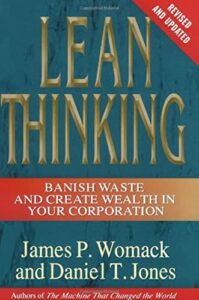
I like how you draw those connections in parallels. If you look at Toyota's approach, it's often described as a customer in philosophy. If you look at a Toyota product development system for vehicles, the lessons around not just building a truck, and then trying to push it on customers. You need to understand their needs and also the pricing and make sure you engineer the vehicle to hit a certain price point as opposed to saying, “Here's our cost, we're going to mark it up”
I'd like you to define lean startup methodology, but one other point I'd like you to make, because we have a lot of audiences who don't work at startups, and I hope they continue tuning in anyway. Your definition of an entrepreneur is applicable as well to people who are working in big large companies. Would you agree?
Yes. In fact, one of the biggest surprises once I started being asked to speak in public about lean startup is, part of my work was to try to bring the practice of entrepreneurship onto a more rigorous footing. I'm a very logical deductive-style thinker. It was important to me to have good definitions of returns and understand what is entrepreneurship and who is an entrepreneur. I'm not just basing my life's work on what I saw in the movies, which I thought was not a very effective model.
I had this definition of a startup. It's a human institution designed to create something new under conditions of extreme uncertainty. It was from that basic definition that I proceeded to define a lean theory of entrepreneurship. One of the funny things about that definition is it doesn't say anything about industry, sector of the economy, or company size. It just says you're trying to build an organization to create something new under conditions of extreme uncertainty.
At my very first talks, I would say, “By the way, this is completely applicable to entrepreneurs inside big companies.” At that time, I was speculating. I felt a little bit like a scientific theorist making a prediction about the physical world without knowing whether it was going to be true or not. I just said, “The theory predicts that these people should exist. If anyone of you are in the audience, please come talk to me.” From that very first talk, I remember it clearly, there were people like that in the audience and they came up to me afterward. They were the most vehement of the people who wanted to ask me, “How specifically do I do this? How can we convince people in my organization to adopt it?”
Most of the theories of disruptive innovation and most of the frameworks that they were using to create new products inside their own companies treated the innovation like a black box. You get the right people, you give them the right budget, you do the organizational structure around them properly, and then magic happens. That's what we used to believe about entrepreneurship, too, incidentally.

What these guys would say is, “I'm the manager of this team. We're in the black box. I've got the firewood, the kindling, my matches, the paper, and all the ingredients right here. Where's my fire?” When the fire doesn't appear, they're like, “What specifically am I supposed to tell my people to do?” That's the exact same problem we see with venture back entrepreneurs who get managed to raise a check for $5 million, and then they're like, “Now what? What specifically am I supposed to do every day? How can I tell if I'm making progress?” This thing has grown into a movement. We have pulled in entrepreneurs from all kinds of different industries and sizes of companies. That's one of the most exciting things about it.
It's insightful the way you help emphasize the idea of uncertainty being both technical risk and market risk. Can you talk about the two of those and dovetail that into what a lean startup is and how it applies to situations like that?
We live in a world of increasing uncertainty in general, and yet our capabilities are also at their all-time high. Lean manufacturing is a huge part of the reason why we find ourselves in this situation. We have more productive capacity than we know what to do with. The dominant question of our time is not, “Can it be built?” but, “Should it be built?”
We live in a time when any product with the exception of ones that are based on true fundamental scientific breakthroughs, but the vast majority of products could be built given sufficient time and resources. The question is, “Is there a market for those products? Is there a way to build a sustainable organization around a set of products and services?”
If you think of the world in a two-by-two matrix, on one axis we ask, “How much market uncertainty is there compared to technical uncertainty?” In some products, the dominant questions are, “Can it be built?” Market uncertainty means, “Can we build a business around it?” You could put industries on that map and you say, “For the classic new automobile introduction, we can say for sure that if we can hit a certain price point and get certain performance characteristics, customers will want it.”
Whereas in other businesses, we face a lot more disruptive innovation. We have a lot more questions like, “If I build this new software product, will customers want it? If I can help people manage their advertising inventory and their enterprise more effectively, will they be willing to pay for it?” All those questions. That's one axis.
On the other axis, we have the question of, “What's the underlying cycle time of that business?” Automobile manufacturing situation, maybe we'll bring a new model a minor introduction or a minor change of a model once a year in the new model year. Every 4 or 5 years, we bring a new major model to market. In worlds like software, a year is an eternity. We can change the version of the product quite rapidly. In fact, when we practice continuous deployment, we can do it multiple times every day. You can align industries along that axis too.
In that upper right-hand quadrant where you have very fast cycle time and lots of market uncertainty, that's the place where lean startup excels. Where we try to use our advantage and cycle time to help us reduce that uncertainty as quickly as possible in order to understand where to invest, but there's a caveat. The people usually hear this talk and they say, “That sounds great. The lean startup sounds like a great idea for those other industries that are in that quadrant. In my industry, we don't have to worry about this.”
You ask yourself, in what direction is the world moving right now on both axes? My contention is, it's only moving in one direction and it's the same. Every industry is being pushed inexorably towards more market risk as everything gets cheaper. It gets easier to start new companies. It gets easier to introduce new products and to distribute them. We all face much more competition, both globally and domestically. Consumers are faced with many more choices about what to do. As technology changes faster, the capabilities of primitive tools become more complex. The level of uncertainty is increasing across all industries. The same forces are also driving down cycle time across industries.
Every industry is being pushed inexorably towards more market risk as everything gets cheaper. Share on XInterestingly, to me, one of the forces is lean manufacturing because we have been systematically applying a cycle time reduction strategy to the way that we work. We can bring new models to market quicker and we can adapt demand to what customers want. That same capability can be used not just for greater efficiency, but also for exploring new product concepts, which is one of the capabilities that then we introduce into lean startup.
When I've heard you talk about your past experiences and talking about cycle time and speed, I appreciate how you emphasize lean is not about being cheap, but it's about being fast and iterative. When I heard you talk before, there were also a lot of aspects of what I would describe as lean culture, respect for people, and not blaming people for errors. Can you talk a little bit about some of the cultural aspects of what you would consider a lean startup to be?
I found Dr. Liker's approach in The Toyota Way helpful in terms of framing the pyramid of topics and the way he shows how the process is the foundation for creating a lean culture, which is about fundamentally empowering people. The same thing is true here. Most of the people who try to create new entrepreneurial cultures do so without having changed the process first.
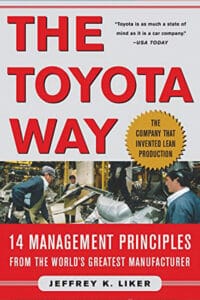
As human beings, we always misunderstand. We always think when someone's behaving badly, being uncreative, or doing something we don't like, we assume it's because of their personality or somehow, they're a bad person or an uncreative person. As we've all learned from those who have studied how work systems operate, most people's behaviors are determined by the system and incentives that they're embedded in.
Part of the work of Lean Startup is to try and change the process by which companies are built and change their daily work process so that when we're working in smaller batches. We're working more cross-functionally. We get faster feedback from customers. We have the opportunity to unleash people's creativity in a new way. That's the most exciting possibility that this revolution is bringing to attention. Most of the new products that are being built worldwide are a complete waste of time.
As a society, we are squandering our most precious resources, which is the time, energy, and creativity of our most talented people. To me, this is about allowing those people to be more productive, but not in a very narrow and efficient sense of doing their individual function well but making the products that they work on matter.
It's doing work that gives your life meaning.
There's nothing more satisfying than being an entrepreneur. It's scary, risky, and has all kinds of ups and downs, but so does life. It's a very human enterprise. The worst is when you have that experience of having devoted years of your life to something and having believed in it so passionately because you are wrapped up in what we call, at Silicon Valley, the reality distortion field.
There's nothing more satisfying than being an entrepreneur. It's scary and risky, and it has all kinds of ups and downs, but so does life. It's a very human enterprise. Share on XThe ability of a team or a company to convince everybody that the thing is definitely, absolutely, and positively going to succeed. If you've ever had that experience, when you finally realize it's going to fail, you realize that you've been lied to, you've been deceived, and you've been tricked. That's the worst kind of failure to have. That breeds a lot of cynicism and bitterness in our modern workforce. That can be removed and fixed.
One of the words that maybe runs the risk of being a misunderstood buzzword is the idea of the pivot. I've heard you talk before. It's been interesting how you've described it. The nerve that it takes to go start a company. The risk that you have to take isn't always combined with that willingness to listen to the market. That stubbornness that helps you get started can also be your downfall. Can you describe the pivot? In the context of that, we did have a question come in via Twitter from Joe Dager @Business901, “How is a pivot different than following the Plan-Due-Check-Act cycle, where you react and adjust accordingly?”
Lean Startup has a complementary theory to PDCA. We call it Build-Measure-Learn. In the fundamental feedback loop that we're working in, we translate ideas into products by building. We have customers interact with those products to generate data, and that data informs our next set of ideas. Build-Measure-Learn are heuristic, as in any lean context is to minimize total time to the feedback loop, rather than becoming efficient in any one of the three activities.
We reserve the term pivot to mean that one of our core business hypotheses has been invalidated and it's time to make a change. Lean startups will constantly optimize their product and constantly make changes in response to customer feedback. A little split test is one way of presenting the product better than another new marketing messages, new features, new designs, and all those functional improvements to a product.
Entrepreneurs have this very special thing, we call it the pivot. Sometimes your optimization techniques start to yield diminishing returns. You are succeeding in making the product better, but you're not getting any closer to having a sustainable business. This is a thing that doesn't have a regular old lean thinking analog. In general, once you start to manufacture a product and start to drive out the waste in your manufacturing process, you tend to get incremental benefits for incremental investment. Not 100%, not every investment pays off the same amount, but because you can understand and you have a way of forecasting demand at least a little bit, you pretty much know, if you can improve your cost targets, you know what you're going to get.
Entrepreneurs often find themselves in a situation where we are improving our work, but customers don't care because we're helping them do something that they don't care about. We're making a bad product easier to use. It's the most common case. We've figured out an easier way for people to discover what the product's all about, get registered, and get involved. Maybe even we've made it easier for them to pay. Fundamentally, the value propositions offered by our product is not one that any customers want. By making the product easier to use, we're helping them more quickly discover that they want to bail out and not be our customers anymore.
Entrepreneurs often find themselves in a situation where they are improving their work, but customers don't care because they're helping them do something they don't care about. Share on XThat's a situation where we have to make a significant change to our business strategy. We might make a change like a customer segment pivot. When we realize, we thought we were selling to one consumer, but there's another kind who would like our product better. We might have to change from being an application to being a platform, or vice versa. We might have to change our engine of growth. We might move from being a viral product that spreads by word of mouth to being one that is supported by paid advertising.
In each of these cases, once we change strategy, then there's going to be a whole cascade of changes that are going to happen as a result. We might wind up having to throw out significant chunks of our product. We might wind up switching from a product to a service, or vice versa. We might have to change the way we market the product or even where the company is located. There are all these secondary changes that come out of a fundamental change in strategy.
It's not something you want to undertake lightly, and it's not something you do all the time, but it is necessary. If you look at the history of startup success, you'll notice this pattern that majority of the time, successful entrepreneurs started with a bad idea. If we are stubborn, persevering, and do that bad idea efficiently, then we're persevering the plane straight into the ground.
I do want to ask you in the category of things that typically don't iterate very quickly in traditional publishing. You're writing a book. I pre-ordered a copy. When's it coming out? Tell the listeners about how that's coming, and what the book is called.
I wish cycle times in the publishing industry were faster, alas. The book will be called The Lean Startup. It's going to be published by Crown, which is one of the big New York business book publishers. It's going to come out in the Fall, we're hoping in early September 2011. I'm excited about it because it'll be the first chance that I've had to walk through the theory of a lean startup and combine it with a number of detailed case studies that are designed for a general business audience.
Right now, the Lean Startup is a very popular methodology with venture-back entrepreneurs in Silicon Valley, with a lot of different tech companies and people who are early adopters of new ideas about entrepreneurship. If you think back to what I said before about how we're wasting so much of people's time, the biggest perpetrators of that waste are still general managers, individual sole proprietors, private equity, and investment bankers. People who have a role to play in the innovation ecosystem, but don't necessarily think of themselves as entrepreneurs or as needing new ideas about entrepreneurship.
The idea of this book is to take the message to everybody in that category to say, “There is something new happening here. There is a better way of managing entrepreneurship, which is helpful regardless of whether you yourself are an entrepreneur or whether your job is to hold entrepreneurs accountable. It'll be a contemporary business book complete with not just the theory of the lean startup, but a lot of very specific case studies of the ideas being applied in a wide variety of industries. I'm pretty excited about it, but yeah, it does take a long time.
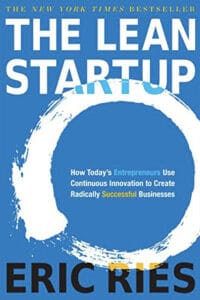
It is exciting. People can learn more at Lean.st, is that correct?
That's right. We built our own website where people can pre-order so that we can run experiments on you as you're pre-ordering, so please do. In fact, if you pre-order one of the things, you'll get access to our complete experimentation system. You can step behind the curtain and you can see all the experiments that we have run and are running. You can see how we're using the data to evolve the marketing and value proposition of the book. I got to eat my own dog food and feel like I got to practice what I preach.
I want to thank you for taking the time to talk about lean startups. It's an interesting field.
Thank you so much. I appreciate it.
Important Links
- The Lean Startup: How Today's Entrepreneurs Use Continuous Innovation to Create Radically Successful Businesses
- Lean.st
- @EricRies – Twitter
- Lean Thinking
- The Toyota Way
- Startups
- Podcast #99 with Brant Cooper and Patrick Vlaskovits on “Customer Development
- @Business901 – Twitter
Please scroll down (or click) to post a comment. Connect with me on LinkedIn.
Let’s work together to build a culture of continuous improvement and psychological safety. If you're a leader looking to create lasting change—not just projects—I help organizations:
- Engage people at all levels in sustainable improvement
- Shift from fear of mistakes to learning from them
- Apply Lean thinking in practical, people-centered ways
Interested in coaching or a keynote talk? Let’s start a conversation.






